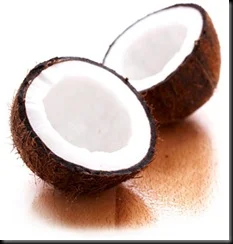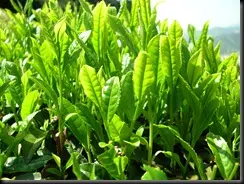Archeological evidence suggests that people consumed tea leaves steeped in boiling water as many as 500,000 years ago. There are three main varieties of tea green, black, and oolong. The difference between the teas is in their processing. Green tea is made from unfermented leaves and reportedly contains the highest concentration of powerful antioxidants called polyphenols. Antioxidants such as polyphenols in green tea can neutralize free radicals and may reduce or even help prevent some of the damage they cause.
Polyphenols contained in teas are classified as catechins. Green tea contains six primary catechin compounds: catechin, gallaogatechin, epicatechin, epigallocatechin, epicatechin gallate, and apigallocatechin gallate (also known as EGCG). EGCG is the most studied polyphenol component in green tea and the most active.
Green tea also contains alkaloids including caffeine, theobromine, and theophylline. These alkaloids provide green tea's stimulant effects. L-theanine, an amino acid compound found in green tea, has been studied for its calming effects on the nervous system.
Green tea has been consumed throughout the ages in India, China, Japan, and Thailand. In traditional Chinese and Indian medicine, practitioners used green tea as a stimulant, diuretic (to promote the excretion of urine), astringent (to control bleeding and help heal wounds), and to improve heart health. Other traditional uses of green tea include treating flatulence (gas), regulating body temperature and blood sugar, promoting digestion, and improving mental processes.
Benefits:
1. Atherosclerosis: Population-based clinical studies indicate that the antioxidant properties of green tea may help prevent atherosclerosis, particularly coronary artery disease.
2. Cholesterol: Green tea lowers total cholesterol and raises HDL ("good") cholesterol in both animals and people. men who drink green tea are more likely to have lower total cholesterol than those who do not drink green tea. Results from one animal study suggest that polyphenols in green tea may block the intestinal absorption of cholesterol and promote its excretion from the body.
3. Cancer: Green tea protects against Bladder, Breast, Ovarian, Colorectal, Esophageal, Lung, Pancreatic, Prostate, cancer.
4. Inflammatory Bowel Disease (IBD): Green tea may help reduce inflammation associated with Crohn's disease and ulcerative colitis, the two types of IBD. If green tea proves to be helpful for preventing colon cancer, this would be an added benefit for those with IBD because they are at risk for colon cancer.
5. Diabetes: Green tea has been used traditionally to control blood sugar in the body. Animal studies suggest that green tea may help prevent the development of type 1 diabetes and slow the progression once it has developed. People with type 1 diabetes produce little or no insulin, a hormone that converts glucose (sugar), starches, and other foods into energy needed for daily life. Green tea may help regulate glucose in the body.
6. Liver disease: Green tea also seems to protect the liver from the damaging effects of toxic substances such as alcohol. Animal studies have shown that green tea helps protect against the development of liver tumors in mice. Results from several animal and human studies suggest that one of the polyphenols present in green tea, known as catechin, may help treat viral hepatitis (inflammation of the liver from a virus). In these studies, catechin was isolated from green tea and used in very high concentrations. It is not clear whether green tea (which contains a lower concentration of catechins) confers these same benefits to people with hepatitis.
7. Weight loss: Clinical studies suggest that green tea extract may boost metabolism and help burn fat. One study confirmed that the combination of green tea and caffeine improved weight loss and maintenance in overweight and moderately obese individuals. Some researchers speculate that substances in green tea known as polyphenols, specifically the catechins, are responsible for the herb's fat-burning effect.
8. Other uses: Drinking green tea has been found effective in a small clinical study for dental caries, or tooth decay. More studies need to be performed. Green tea may also be useful in inflammatory diseases, such as arthritis. Research indicates that green tea may benefit arthritis by reducing inflammation and slowing cartilage breakdown. Chemicals found in green tea may also be effective in treating genital warts and preventing symptoms of colds and influenza.
Precautions:
The use of herbs is a time-honored approach to strengthening the body and treating disease. However, herbs contain active substances that can trigger side effects and interact with other herbs, supplements, or medications. For these reasons, people should take herbs with care, under the supervision of a practitioner knowledgeable in the field of botanical medicine.
People with heart problems, kidney disorders, stomach ulcers, and psychological disorders (particularly anxiety) should not take green tea. Pregnant and breast feeding women should also avoid green tea.
People who drink excessive amounts of caffeine (including caffeine from green tea) for prolonged periods of time may experience irritability, insomnia, heart palpitation, and dizziness. Caffeine overdose can cause nausea, vomiting, diarrhea, headaches, and loss of appetite. If you are drinking a lot of tea and start to vomit or have abdominal spasms, you may have caffeine poisoning. Lower your caffeine intake and see your health care provider if your symptoms are severe
Source: MSN
Copyright © 2004 & 2007 Ibrahim Mohamed! Inc. All rights reserved.e-mail:ibumohd@gmail.com




